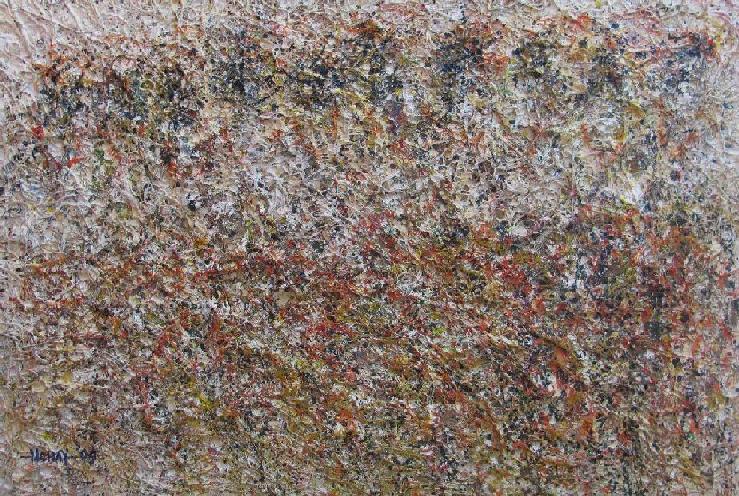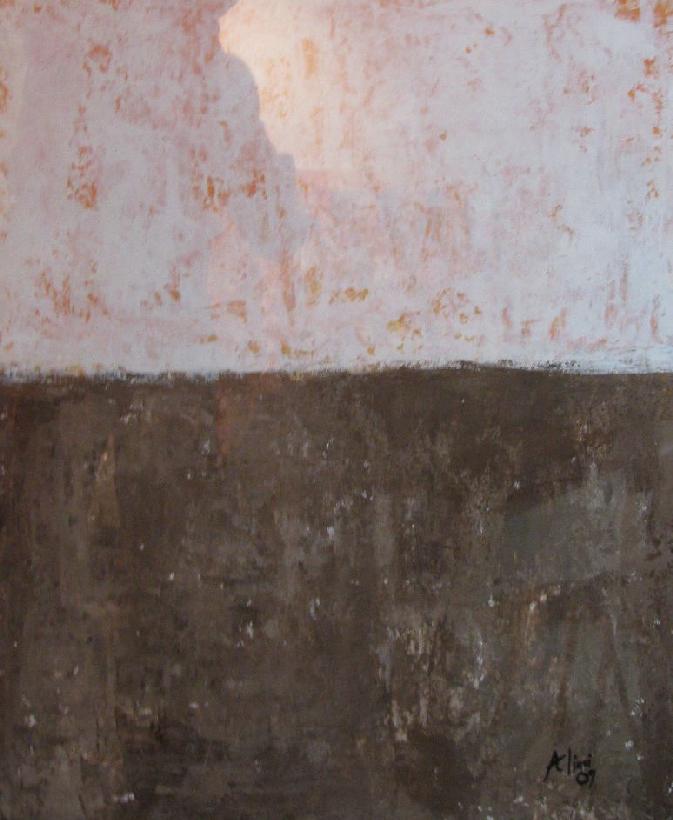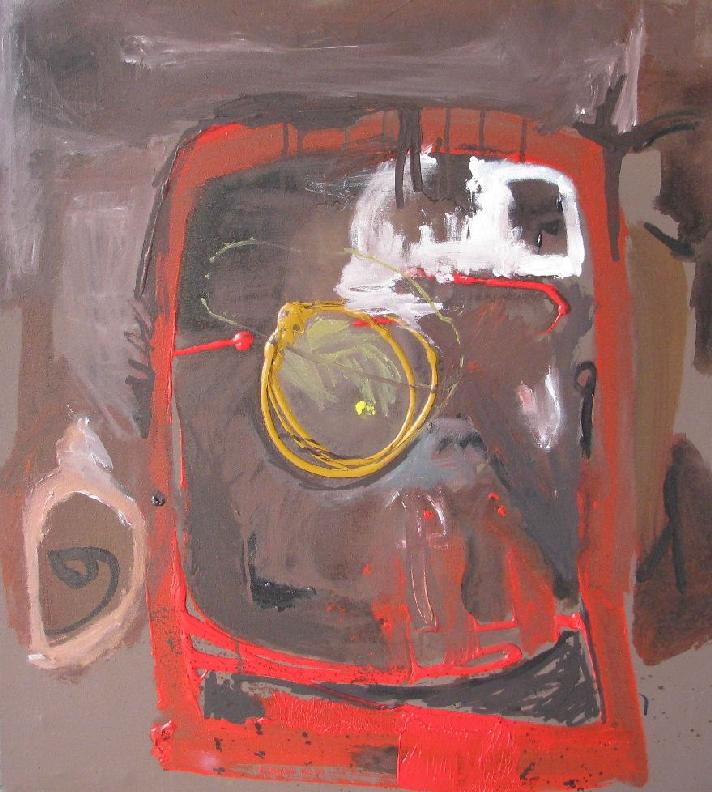Some time ago Oliver Enwonwu asked whether I could put together an exhibtion at the Omenka Gallery of the Ben Enwonwu Foundation. After some work and a few nice surprises the exhibition (titled “Beyond figuration“) will open on July 10. This is the introduction prepared for it:
Nigerian artists have not been very much inclined to pure abstraction. The older generations -Onabolu, Enwonwu, Wangboje, Okeke, Onobrakpeya, Grillo, Barber, the Oshogbo artists- moved comfortably within the broad confines of representation, even when passing it through highly personal filters. After then, isolated attempts have not created schools, styles or groupings capable of producing on a regular basis quality abstract works. Unfortunately, the of Gani Odutokun 15 years ago stopped a truly promising experiment in free abstraction.

It is within this context that this exhibition is conceived. It attempts to present a few examples of non-figurative art –mainly painting- created by young artists. It casts a look at what is being done now: a snapshot of the present to help us understand in which direction abstraction is moving in Nigeria. The scope and size of the exhibition is not broad and I hope a more ambitious one is put together showing the works of established artists who produce non-figurative painting: Uwatse, Kainebi, Buhari… Abstract photography is another field left unexplored.
This exhibition started with a desire to look for young artists that do away with representation of external reality and attempt to create self-referential works, moving from re-presenting the world to presenting small new worlds. Of course, artists can’t work ex-nihilo (from nothing), they always carry their cultural, historical, formal baggage. They come from Auchi or from Yaba, Nsukka, Ife or somewhere else and these different backgrounds show in their works.
In my search –cursory, incomplete, limited to emerging artists- I have come across various approaches to abstraction, works that could fit easily under different labels: “abstract expressionism”, “lyrical abstraction”, “colour-field painting”, “post-painterly abstraction”, “neo-expressionism”, “minimalism” or any of the currents of non-figurative, non-representational art created since the first attempts by Kandinsky more than a century ago. The works selected for the exhibition gravitate generally towards those that emphasize immaterial (spiritual) aspects in painting. This does not mean that there is a lack of works full of a rich materiality.

Wale Alimi’s works, so close to Rothko, are unusual in the Nigeria art scene. Their coolness and sobriety contrast strongly with the overworked and overdone so prevalent in shows, galleries and collections…

This exhibition includes only three works by Tony Nsofor. I wish more could have been displayed. In these non-figurative works Nsofor takes an improvisational, additive approach to painting that is full of spontaneity. He allows room for the al and they look as if no preconceived design guided the process of painting. This spontaneity adds great freshness to them.

George Edozie and Bob-nosa Uwagboe take a much more planned approach; under the strong brushstrokes and collage materials pasted on the surface there are deeper layers of drafting structuring their works.
Benedict Olorunnisomo and Uche Igwe are highly independent artists. They rarely exhibit, they do not form part of any group, do not follow any defined style, their works are not particularly “marketable” as a commodity but they have an intense quality. There are artists that first look around and then paint what they see, there are others that also look around, but then they paint what they feel, not what they see. There are still others that simply “decorate” a surface, without any look outside or inside. Finally, there are those that do not look outside, they create from the inside. Benedict and Uche are among them.
Tayo Olayode and Norbert Okpu works generally show a loose figuration but for in this exhibition they present abstract works.

The exhibition is mainly about non-figurative painting, but the two-dimensionality of the panels showed by Gerald Chukwuma (wooden panels) and Mukaila Ayoade (panels made for newsprint) fits well in it. Both of them present an abstraction that goes beyond formalism and is rich in references and meaning.
Joseph Eze continues experimenting with discarded materials, but this time formal considerations seem to take precedence over the discursive ones.
Well aware of how easy it is for abstract art to remain on the surface, with a shallow formalism that might be pleasing to the eye, but has little to say to the mind, the exhibition tries as much as possible to stay away from purely “decorative” products. All in all, this is not small achievement.
The Ben Enwonwu Foundation deserves praise for an exhibition that attempts to go beyond the conventional.
